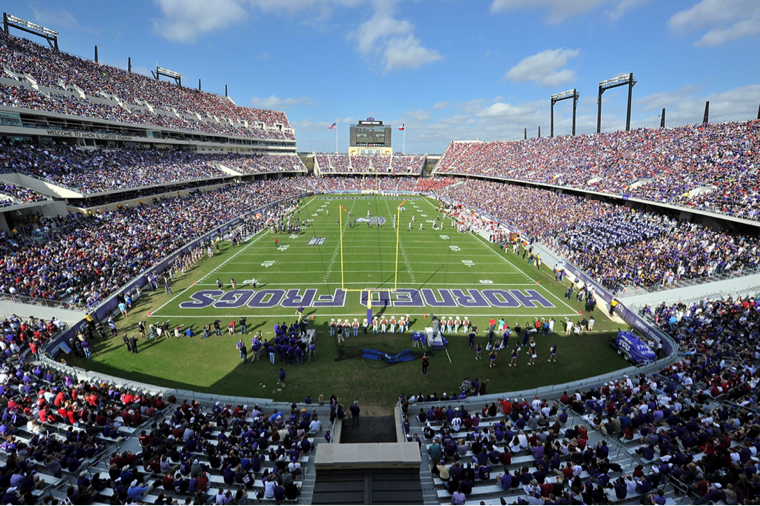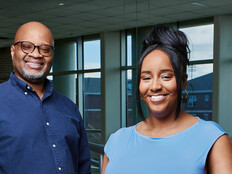Texas Christian University Makes Progress on Stadium Wi-Fi

- Total access points: 349
- Access point controllers: Cisco 5508
- Core switching systems: Dual Cisco Catalyst 6509
- Linear footage of conduit: 25,000 sq. ft., nearly five miles
- Total footage of copper and fiber: 60,000 ft., in excess of 11 miles
- Anticipated on-air date: Aug. 1, 2013
- Take rate: Approximately 25 percent
- Spectrum coverage: Engineered for 2.4-GHz and 5-GHz networks
SOURCE: Data prepared by Deputy CTO Travis Cook, Texas Christian University
For Bryan Lucas, chief technology officer at Texas Christian University in Fort Worth, delivering Wi-Fi to more than 44,000 football fans at Amon G. Carter Stadium is just an extension of his work as a university IT administrator — one who is adjusting to an era in which college students bring multiple devices to campus.
“I think we’re a bit different than a pro stadium, in that most of the students carry multiple wireless devices and may be bringing them into the stadium,” Lucas says. “In many ways, what we’re doing with the stadium is similar to the way we have to provide high-density coverage for BYOD on the rest of campus.”
TCU plans to have Cisco Connected Stadium Wi-Fi fully rolled out by September 7, when the Horned Frogs play their first 2013 home game against Southeastern Louisiana University. However, Lucas and the team he assembled with Cisco Systems and AT&T expect to tweak some of the Wi-Fi coverage, once they see what the usage rate is in the student sections.
“While only about 8,000 of the fans are students, we might see a ‘take’ rate as high as perhaps 50 percent in the student sections, so we’re probably going to have to make some adjustments throughout the season,” Lucas says.
The Wi-Fi rollout at the stadium follows a $164 million reconstruction project that was completed in time for the start of the 2012 football season. Lucas says the administration saw the Wi-Fi coverage as a necessity, given the high expectations of fans when it comes to technology amenities.
Coverage is being added through a multiphased approach. First, Lucas and his team rolled out wireless at the ticket turnstiles, in the press area and at some of the club suites. Cellular coverage was firmed up across the stadium with the help of AT&T and American Tower, a communications infrastructure company. The second phase, which will be completed by the end of this summer, will focus on providing Wi-Fi within all of the fan areas and adding cellular coverage from T-Mobile and Verizon.
Wireless antennas are being added in three ways: in 9" x 11.75" x 3.375" boxes under the stadium’s bench seating, on handrails in the middle seating sections and on poles mounted in the stadium’s upper levels. At one point, faced with an interesting technical wrinkle, engineers had to drill holes through concrete in the seating areas to run conduit back to intermediate distribution frames (IDFs) strategically placed throughout the stadium.
“In talking to other stadiums’ teams that have done this, we found that most are doing a mix of these deployment methods,” Lucas says. “The main thing is that each organization has to do what works best for them.”








